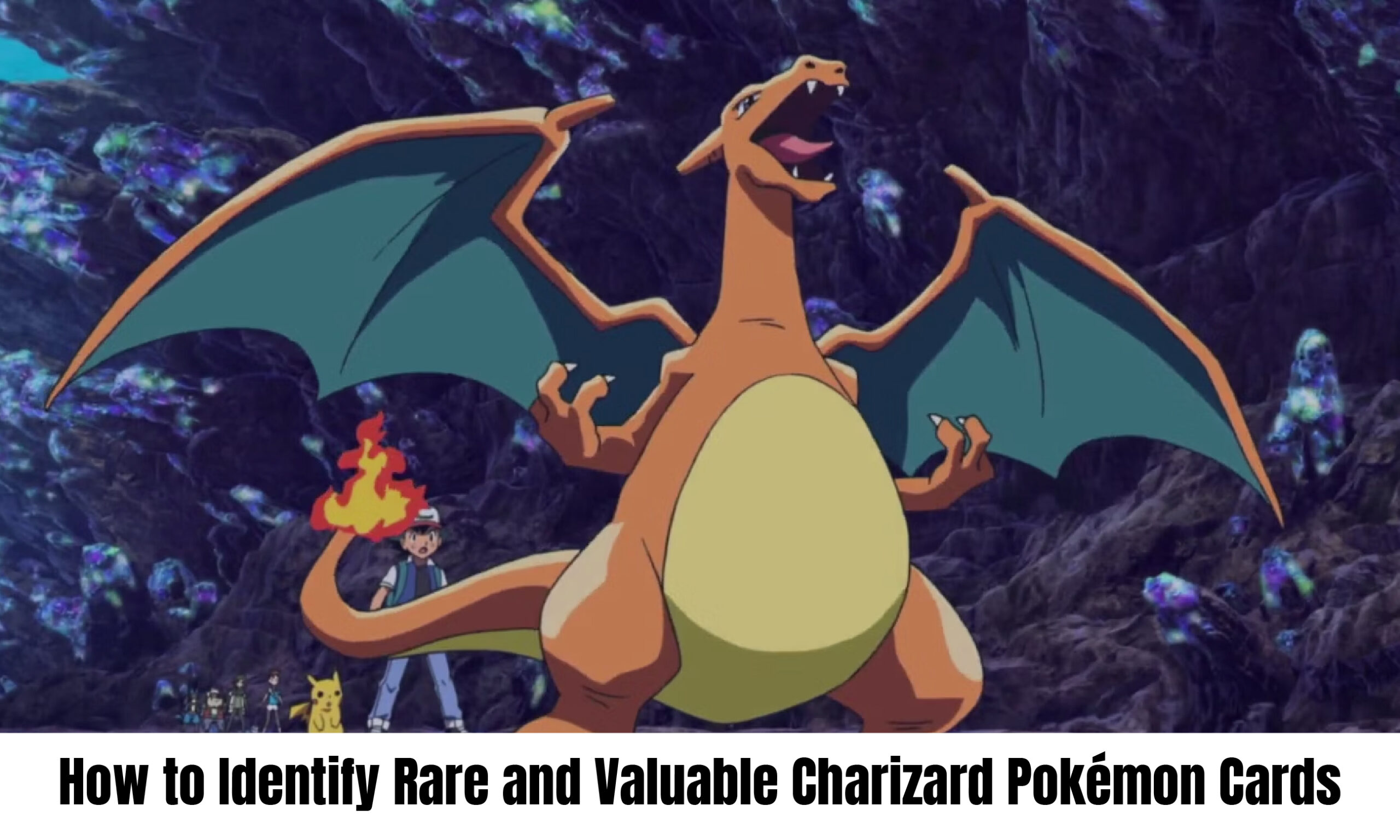The Charizard Phenomenon
Charizard is not just another Pokémon; it’s a cultural icon. Ever since its debut in the original Pokémon games and its subsequent appearance in the Pokémon Trading Card Game (TCG), Charizard has captivated fans worldwide. Collectors and players alike hold Charizard in high esteem, making it one of the most sought-after cards in the Pokémon universe. But what exactly makes a Charizard card rare and valuable?
As a key figure in the Pokémon franchise, Charizard’s image graces numerous cards, but not all are created equal. Some Charizard cards are so rare and valuable that they have raised thousands of dollars at auctions. The combination of nostalgia, artwork, and gameplay relevance has propelled Charizard cards to the top tier of collectible cards. This article aims to guide you through the process of identifying whether your Charizard card is a potential goldmine or just another piece of cardboard.
Understanding the Basics: What Makes a Charizard Card Valuable
When it comes to Pokémon cards, not all are created equal—especially when it comes to Charizard. Understanding what makes a Charizard card valuable is the first step in identifying whether your card is worth more than just sentimental value. Several factors influence the value of a Charizard card, including its rarity, condition, and edition. Whether you have a classic Charizard from the early days of Pokémon or a more modern Charizard EX card, these factors will play a crucial role in determining its market value.
Rarity: The Core of Value
One of the primary determinants of a Pokémon Charizard card’s value is its rarity. Rarity in Pokémon cards can be indicated by several features:
- Holographic (Holo) vs. Non-Holo: Holographic Charizard cards, where the artwork has a shiny, reflective surface, are often more valuable than their non-holo counterparts.
- Shadowless Cards: Early print runs of Pokémon cards had no shadow around the artwork box. These “shadowless” cards, particularly the Charizard, are much more valuable than later printings.
- First Edition: Cards marked with a “1st Edition” stamp are typically from the first print run and are much rarer and more valuable.
Condition: The State of Preservation
Even a rare Charizard card can lose much of its value if it’s not in good condition. The condition of the card is evaluated based on centering, edges, surface, and corners. For instance, a first edition Charizard in mint condition can be worth thousands, while the same card in poor condition might only fetch a fraction of that price.
Edition: The Age and Print Run
The edition of the Charizard card also plays a significant role in its value. Older editions, like the Base Set 1st Edition Charizard, are among the most valuable Pokémon cards ever made. However, newer editions, such as the Charizard EX series, can also be valuable, especially if they are rare or part of a limited print run.
Identifying Rare Charizard Cards: Key Features to Look For
Identifying a rare Charizard card can be challenging, especially with the numerous editions and variations released over the years. However, by focusing on certain key features, you can determine if your Charizard card is among the rare and valuable ones. Whether it’s a classic Pokémon Charizard from the Base Set or a more modern Charizard EX, knowing what to look for is essential.
Holographic vs. Non-Holographic
One of the first things to check is whether your Charizard card is holographic. Holographic (Holo) cards have a shiny, reflective surface on the image of the Pokémon, which makes them more desirable and often more valuable. A holographic Charizard card, especially from an older set like the Base Set or Base Set 2, can be significantly more valuable than a non-holographic version.
Shadowless Edition
Another key feature to look for is whether the card is shadowless. The shadowless design refers to the absence of a shadow along the right border of the image box, a feature unique to the early print runs of the Base Set. Shadowless Charizard cards are highly sought after because they are rarer than their shadowed counterparts. The combination of being both shadowless and holographic makes these Charizard cards exceptionally valuable.
First Edition Stamp
One of the most critical features that can drastically increase the value of a Charizard card is the First Edition stamp. This stamp is typically located on the left side of the card, just below the image. Cards with this stamp are from the very first print run of a particular set and are often much rarer and more valuable than later print runs. For example, a First Edition Shadowless Charizard from the Base Set is one of the most coveted cards among collectors.
Charizard EX and Modern Editions
While the older Charizard cards tend to get the most attention, certain modern Charizard cards, such as those from the Charizard EX series, can also be valuable. These cards often feature unique artwork, special foil patterns, or are part of limited edition sets, all of which can contribute to their rarity and value. Collectors should pay attention to these modern variations, as they can still fetch a good price, especially if kept in mint condition.
Comparison Table: Key Features of Rare Charizard Cards
| Feature | Description | Value Impact |
| Holographic | Reflective surface on the image | High |
| Shadowless | No shadow along the right border of the image box | Very High |
| First Edition Stamp | Indicates the card is from the first print run | Extremely High |
| Charizard EX | Modern cards with unique features and limited editions | Moderate to High (varies) |
Condition Matters: Evaluating the Physical State of Your Card
While rarity and special features play a significant role in determining a Charizard card’s value, the condition of the card is equally important. A rare Charizard card in poor condition can be worth significantly less than a more common card in mint condition. Evaluating the physical state of your Charizard card is crucial to understanding its true market value.
Key Factors to Assess When Evaluating Condition
When examining the condition of your Charizard card, collectors and grading services typically focus on the following four key areas:
- Centering: This refers to how well-aligned the image is within the card’s borders. Cards that are off-center, where the borders are uneven, are considered less desirable. Ideally, the image should be perfectly centered, with even borders on all sides.
- Edges: The edges of the card should be smooth and free of nicks, dings, or whitening. Damage to the edges can significantly decrease a card’s value. Cards that have been handled frequently or stored improperly often show wear along the edges.
- Surface: The surface of the card should be clean and free of scratches, creases, or other marks. Holographic surfaces are especially prone to scratches, which can greatly diminish the card’s appeal and value. A clean, flawless surface is essential for a card to be considered in mint condition.
- Corners: The corners of the card should be sharp and not rounded or bent. Bent or damaged corners are a common issue, especially with older cards, and can significantly lower the card’s grade and value.
Example: Mint vs. Damaged Cards
To illustrate the importance of condition, let’s compare two hypothetical Charizard cards:
- Card A: A 1st Edition Shadowless Charizard in mint condition with perfectly centered image, sharp corners, clean edges, and a flawless surface.
- Card B: The same 1st Edition Shadowless Charizard, but with noticeable wear on the edges, a few scratches on the surface, and slightly bent corners.
Card A could easily fetch a price in the six figures, while Card B might only sell for a fraction of that, despite being the same rare edition. This stark difference highlights why maintaining and evaluating your card’s condition is so critical.
Grading Scales
Professional grading services like PSA (Professional Sports Authenticator) and Beckett use a numerical scale to assess a card’s condition. The scale typically ranges from 1 (Poor) to 10 (Gem Mint), with higher numbers indicating better condition. Cards graded as Gem Mint (10) or Mint (9) are the most valuable, while those with lower grades may still hold value depending on their rarity and demand.
List: Tips for Maintaining Card Condition
- Store cards in protective sleeves or hard cases to prevent damage.
- Avoid handling cards directly to prevent oils from your skin from causing damage.
- Store cards in a cool, dry place to avoid moisture damage.
The Role of Professional Grading: How and Why to Get Your Card Graded
After you’ve thoroughly evaluated the rarity and condition of your Charizard card, the next step in determining its value is to consider professional grading. Having your card graded by a reputable service can significantly enhance its market value, as it provides a standardized assessment of its condition. Grading can be especially important for rare cards like Charizard EX or the original Base Set Charizard, where slight differences in condition can lead to substantial variations in value.
Why Professional Grading Matters
Professional grading services, such as PSA (Professional Sports Authenticator) and Beckett Grading Services (BGS), offer an expert evaluation of your card. They assess the card’s condition using a strict set of criteria and assign it a grade on a numerical scale. This grade provides potential buyers with a clear, unbiased indication of the card’s quality, which can make the difference in whether or not your card sells at its highest possible value.
Benefits of Professional Grading:
- Standardized Evaluation: Grading services use consistent, standardized criteria, ensuring that every card is evaluated fairly.
- Market Trust: A professionally graded card is generally more trusted by buyers, as it eliminates the uncertainty of condition.
- Increased Value: Graded cards often sell for more than ungraded cards, particularly if they receive a high grade.
How to Get Your Charizard Card Graded
Getting your Charizard card graded is a straightforward process, though it requires careful handling and consideration. Here’s a step-by-step guide:
- Choose a Grading Service: Decide whether you want to go with PSA, Beckett, or another grading service. PSA is the most popular for Pokémon cards, but Beckett is also highly respected, especially for its detailed sub-grades.
- Prepare Your Card: Before sending your card in for grading, make sure it is clean and free from any debris. Place the card in a protective sleeve or toploader to prevent damage during transit.
- Submit Your Card: Follow the submission guidelines provided by the grading service. This usually involves filling out a form, selecting the service level (based on the value and turnaround time you desire), and securely packaging your card for shipment.
- Wait for Grading: Once your card is received, the grading service will evaluate it, assign a grade, and encase it in a tamper-proof holder with a label indicating its grade. The process can take anywhere from a few weeks to several months, depending on the service level you selected.
- Receive and Review Your Card: After grading, your card will be returned to you. At this point, you can decide whether to keep it as a prized part of your collection or sell it on the market.
Case Study: The Impact of Grading on Charizard Card Value
Consider the following example:
- Ungraded Charizard EX Card: Without professional grading, a Charizard EX card in near-mint condition might sell for around $100-$200.
- Graded Charizard EX Card (PSA 10): The same card, if graded as a PSA 10 (Gem Mint), could easily sell for $500 or more.
This case illustrates how grading can drastically increase the card’s value by providing buyers with the assurance that they are purchasing a high-quality item.
Grading Scales: PSA vs. Beckett
| Grade | PSA Description | Beckett Description |
| 10 | Gem Mint | Pristine (BGS 10) |
| 9 | Mint | Mint (BGS 9) |
| 8 | Near Mint-Mint | Near Mint-Mint (BGS 8) |
| 7 | Near Mint | Near Mint (BGS 7) |
Quote from a Collector: “Having my Charizard card graded was the best decision I made as a collector. Not only did it significantly increase the card’s value, but it also gave me peace of mind knowing the card’s condition was officially recognized.”
Getting your Charizard card graded can be a game-changer in maximizing its value. Whether you’re looking to sell or simply want to preserve your card in the best possible way, professional grading is an investment worth considering. In the next and final section, we’ll wrap up with tips on how to maintain your card’s value over time.
Conclusion: Maximizing the Value of Your Chase Card
Owning a Charizard Pokémon card can be both a nostalgic treasure and a valuable asset. Whether you’ve recently discovered a Charizard EX in your collection or you’ve held onto a first edition Charizard since the 1990s, understanding how to maximize its value is crucial. In this final section, we’ll recap the key points we’ve covered and provide some tips on how to ensure your Charizard card maintains or even increases its value over time.
Recap of Key Points
- Rarity and Special Features: The rarity of your Charizard card is a major factor in its value. Look for features like holographic surfaces, shadowless design, and first edition stamps to identify whether your card is among the rare and valuable ones.
- Condition Assessment: The physical condition of your card plays a significant role in its market value. Pay attention to centering, edges, surface quality, and corners, as these factors will be closely evaluated by collectors and grading services.
- Professional Grading: Having your card graded by a reputable service like PSA or Beckett can substantially increase its value, especially if it receives a high grade. Grading provides buyers with a trusted evaluation of your card’s condition, making it easier to sell at a premium price.
Tips for Maintaining Card Condition and Value
- Proper Storage: Keep your Charizard card in a protective sleeve or a hard case to prevent any damage. Consider storing your most valuable cards in a secure, climate-controlled environment to avoid exposure to heat, moisture, and light, all of which can degrade the card over time.
- Handle with Care: Whenever you handle your card, make sure your hands are clean and dry. Avoid touching the card’s surface directly to prevent fingerprints or smudges. If possible, use cotton gloves when handling particularly valuable cards.
- Regular Inspections: Periodically check your cards to ensure they are still in good condition.Catching issues early can help you take preventive measures to preserve the card’s value.
- Consider Grading: If your card is in good condition and particularly rare, consider having it graded. Even if you don’t plan to sell it right away, grading can secure its condition and value for future considerations.
- Stay Informed: The market for Pokémon cards can fluctuate, so it’s important to stay informed about trends. Join collector communities, follow market updates, and keep an eye on auction results to gauge the current value of your Charizard card.
Final Thoughts on Collecting and Trading Charizard Cards
The world of Pokémon card collecting is as vibrant and exciting as ever, with Charizard remaining at the forefront as one of the most iconic and sought-after cards. Whether you’re a seasoned collector or just starting out, understanding the factors that contribute to a card’s rarity and value is key to making informed decisions.






